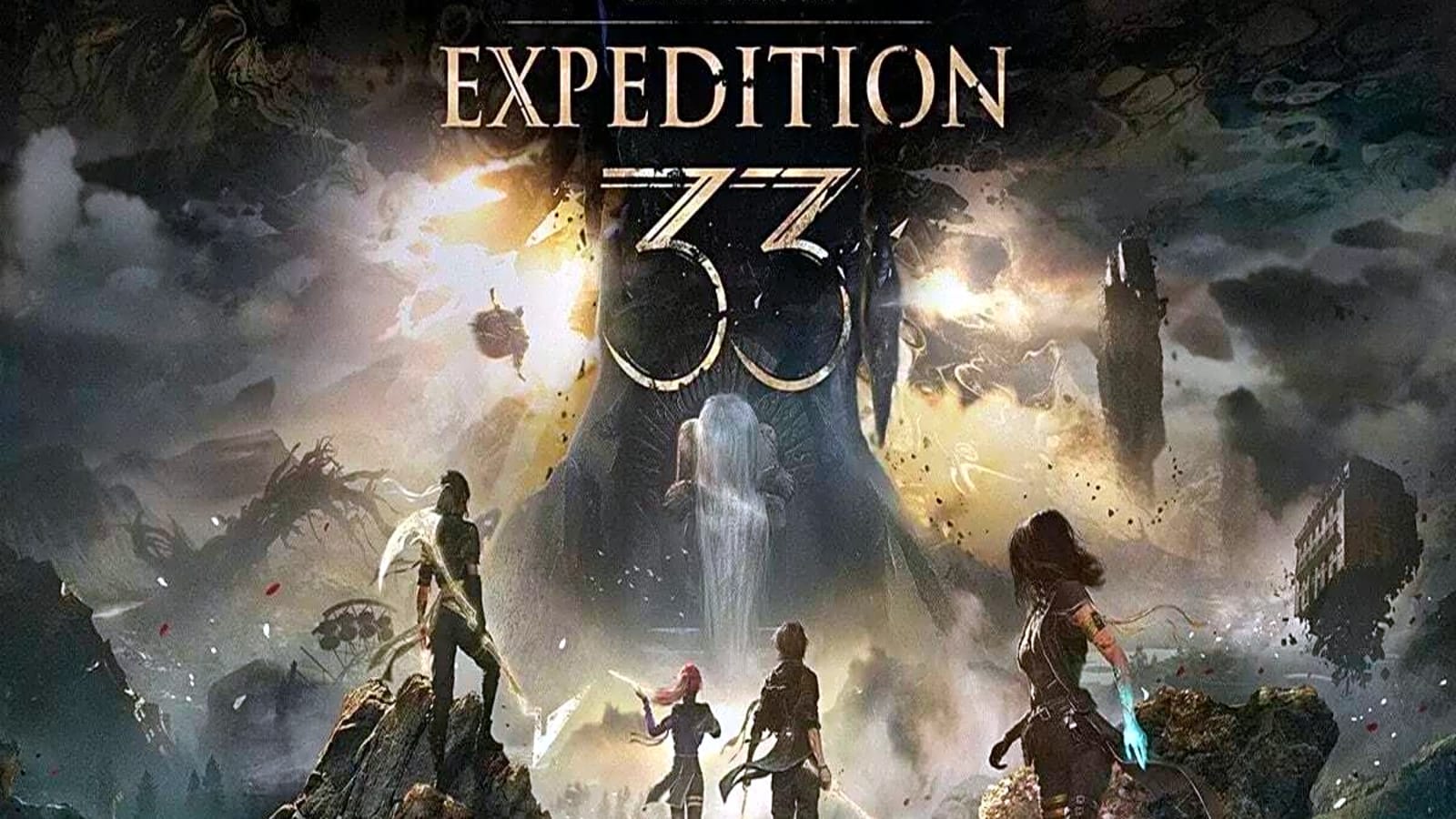
There is no greater choice than the one presented at the end of Clair Obscur: Expedition 33. Verso, the remnant of a man who was lost to an awful tragedy, the last fragments of his soul collated from the memories of his beloved family, steps into the true heart of the living canvas to end it all. As he’s about to succeed, Maelle stops him with a plea to let the canvas remain, to let things continue on so that Verso can continue to live within this painted world. But Verso doesn’t want that.
The player is then given the option to play as Verso or Maelle, to choose to accept reality and to move forward with the knowledge and acceptance of Verso’s true passing, or to choose the illusion, for the escape that is slowly killing Maelle and her mother, to continue. Which would you pick? And how does the Sandfall Interactive game, which has taken the world by storm, use the world of Clair Obscur: Expedition 33 to build up to this choice?
Prioritising Escapism
Hold on to each other.
Clair Obscur: Expedition 33’s ending begins as Verso approaches the faceless boy, who is keeping the canvas together. He kneels down in front of the child and says: ‘You’re tired of painting, aren’t you?’ to which the boy responds with a nod. Verso is speaking to his own soul, showing how stretched thin it is to carry on in this unnatural way, but when Maelle appears to speak to Verso and their conversation heats up, her arguments to keep the canvas alive are compelling.
She says: ‘Here I have a chance to live. Out there, I merely exist.’ At this point in the story, Maelle’s sense of identity is more ingrained with the fabrications of the painting than it is with what she sees as the wretched truth, and as Renoir stated, clinging on to this reprieve, not being able to face the grief of losing Verso, is killing both Maelle and Aline.
As they start to clash, Maelle calls out that Verso does not have the right to make this choice for everybody else, for all of Aline’s creations who have led their own compelling lives that we have had a glimpse into along this journey. True, we want Sciel to be reunited with her husband, Gustav, and with Amy and Lune to have a chance to find peace. But the cost, according to Verso, is too great. Aline and Maelle’s real lives for their fabricated ones.
A Weary Encore
Once Maelle has defeated Verso and he is fading away in her arms, he begs her to reconsider. ‘I don’t want this life. I don’t want this life’ he pleads, but so entrenched is Maelle in the denial of her grief that she is unable to find the compassion to grant her brother’s heartfelt request.
Clair Obscur: Expedition 33 then takes us back to a restored Lumiere, where the people that Verso almost destroyed are happily getting ready for a performance at the Opera House. Sciel and her husband are seen together, as are Maelle and Gustav, with Amy present and Lune. The gang’s all here, and everything seems like it really is going to be fine, like denying grief really can be the answer.
But then an aged Verso takes to the stage. The colours fade to black and white, and the scope of the visuals is pushed inwards, no longer cinematic widescreen, almost like the player is being forced into a box or a cage. Verso looks over at a smiling Maelle, disdain clear on his features. He really does hate this puppeteering life. He doesn’t want to continue on forever this way, and as the first discordant note is struck, the game cuts to a close-up of Maelle being infected by the canvas, just like her mother.
Clair Obscur: Expedition 33 is complete, and the closing statement of the fire that took Verso’s life is that it also took Maelle’s and Aline’s as well, albeit through a slower poison of the mind.
Accepting Grief
See things as they are. Not how you want them to be.
As Verso and Maelle face off, it’s important to pay attention not only to the words being said, but in their delivery. As the conversation progresses, Maelle becomes more and more passionate, more and more defensive of her own choices, while Verso remains calm. Maelle is still very much a child trying to deal with emotions so mammoth that she physically cannot take them. The canvas is her reprieve, her survival, and as she finally lies decaying in Verso’s arms, she begs him: ‘Please don’t leave me again.’.
Once Maelle is gone, and as the canvas fades, it shows Verso and the player the consequence of making such a heavy choice. The other inhabitants of the painting truly are dying, in a metaphor to show that acceptance was never going to be easy. Sciel, Esquie, and Monoco are accepting, the latter two embracing Verso in a hug that symbolises leaving his childhood behind.
Sciel confirms she understands by holding her hand out for Verso to take, and then, there is Lune. She stands in front of the portal, eyes burning and expression betrayed. Then, as she begins to expire, she sits cross-legged in front of the thing, ever stubborn and ever unaccepting of Verso’s true motivations for joining with them. She is the last remnant of denial, the stubborn thread left to press guilt into Verso’s heart, and of course, she is powerless. Verso holds his hand out for the faceless child to take, confirming that he is, in fact, that fragmented part of Verso left behind after his death, and together, the two walk into the afterlife.
Life After Death
The last cut scene of Clair Obscur: Expedition 33 for this ending shows the family together in front of Verso’s grave, and overall, the image is more positive. There is a much more satisfying sense of closure on the story, and though the family is obviously sad, they are able to stand tall together. Renoir is no longer surrounded by ‘living corpses’, and Aline is able to lean on her other family members for the support that she might need to confront her demons surrounding Verso’s death.
As for Maelle? She’s seen holding on to Verso’s Esquie plush, which could still represent a desire to hold on to him via the medium of escapism. After all, Verso did say that she had the power to repaint whatever she wanted. However, the inhabitants of the canvas appear to her behind Verso’s grave, waving to finally say goodbye as the flowers are placed and Maelle’s attention is turned for the first time since her brother died, not to his fate, but to the sprawling panoramic of real-world France.
Coping With Loss
From the moment Clair Obscur: Expedition 33 opens with the hook of having everyone older than the number on a mysterious monolith waste away, it beautifully crafts its story around the theme of grief and how certain coping mechanisms can lead to a tragedy just as terrible as the one that began the spiral.
The game stunningly molds its narrative around the idea of various losses, introducing a multitude of fascinating characters to embody grief at varying stages and showing how they affect not only Maelle and her rapidly deteriorating mental state, but the other characters as well in a way that appears truly organic.
By the time the ending of the game is presented, by the time we are given our choice right in the middle of a heated debate between siblings, the players are being asked what they themselves would do to cope, if they believe that preserving the canvas is the right way to handle such a tragedy, or if allowing Verso to fade away and accept the crippling pain that comes with that is the answer.
Clair Obscur: Expedition 33 is currently available to purchase on Steam at 10% off and can be played on PlayStation 5, Xbox Series X/S, and PC.
More must-reads:
- NFL decides on Jalen Carter punishment for spitting on Dak Prescott
- Bulls score massive win with Josh Giddey extension
- The 'Two passing and rushing touchdowns NFL games' quiz
Breaking News
Trending News
Customize Your Newsletter
 +
+
Get the latest news and rumors, customized to your favorite sports and teams. Emailed daily. Always free!








